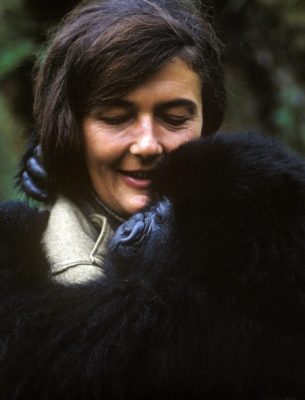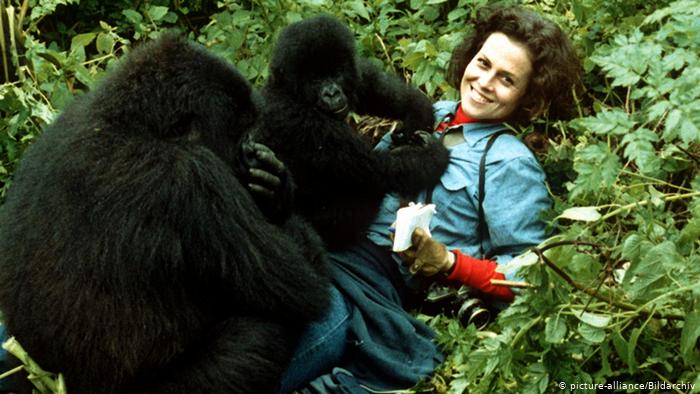Many are familiar with the work of this month’s Woman of Discovery, Dian Fossey (1932-1985). Humankind’s fascination with primates, and love for learning about them, was in large part fostered by Fossey’s work, much of which focused on studying mountain gorillas in Rwanda. Also a student and mentee of Dr. Louis Leakey, as was Dr. Jane Goodall, Fossey’s work was spurred by Leakey’s influence and a lifelong love of animals.

After receiving a bachelor’s degree in occupational therapy, Fossey started out working in various capacities at hospitals and medical facilities in California. This led to her working on a farm owned by one of the hospital doctors, rekindling her passion for animals which she developed as a child. She became interested in traveling to Africa around this time, and finally visited in her early 30s.
While in Africa, she toured two places that led to her 20-year career studying the mountain gorilla: the archaeological site of Louis and Mary Leakey and the mountain gorilla field study location of Dr. George Schaller. She met Leakey again later in California when he was lecturing, and was able to capture his attention in order to plant the seeds for a long-term study of the gorilla, which she undertook in 1966.
She began her work first in the Congo, which was short-lived due to political unrest in the area. After that, she moved on to Rwanda, where she founded the Karisoke Research Center in the remote rainforest and began studying the mountain gorilla in earnest. Many challenges ensued, including language barriers and the rough nature of living in the wild, as she sought to win the trust of the gorillas themselves.
Over nearly two decades, Fossey would make some of the world’s most significant discoveries about the species. During her initial time there, she pursued further academic credentials, eventually earning her PhD from Darwin College, Cambridge. Even more important than the discoveries she made about behavior and physiology of the gorillas, was the attention her work drew to their plight and the precariousness of their lives in the rainforest. A pioneering conservationist, Fossey fought to stop the poaching of gorillas and to protect their habitat.
In the early 80s, she was a visiting professor at Cornell University during which time she also wrote her famous book, “Gorillas in the Mist.” The book recapped her years working in the rainforest and also issued a call to actively pursue conservation efforts. A movie by the same name followed the book. She returned to Africa shortly after her book was published in 1983.
Fossey’s death was tragic and highly publicized, as she was found murdered in her hut at the research center in 1985. Mystery still surrounds the perpetrator of the crime, and many theories have been put forth over the years.
Her legacy continues in the form of the Dian Fossey Gorilla Fund International (known in the UK as The Gorilla Organization), originally founded by Fossey as the Digit Fund, named after a gorilla with whom she was particularly close who was killed by poachers. The fund continues her work in Rwanda monitoring and studying the mountain gorilla. Her work has also been credited with laying the foundation to reverse the depopulation of the species, although they are still considered critically endangered. Without her work, many would still be unaware of the mountain gorilla and they may have even become extinct.


